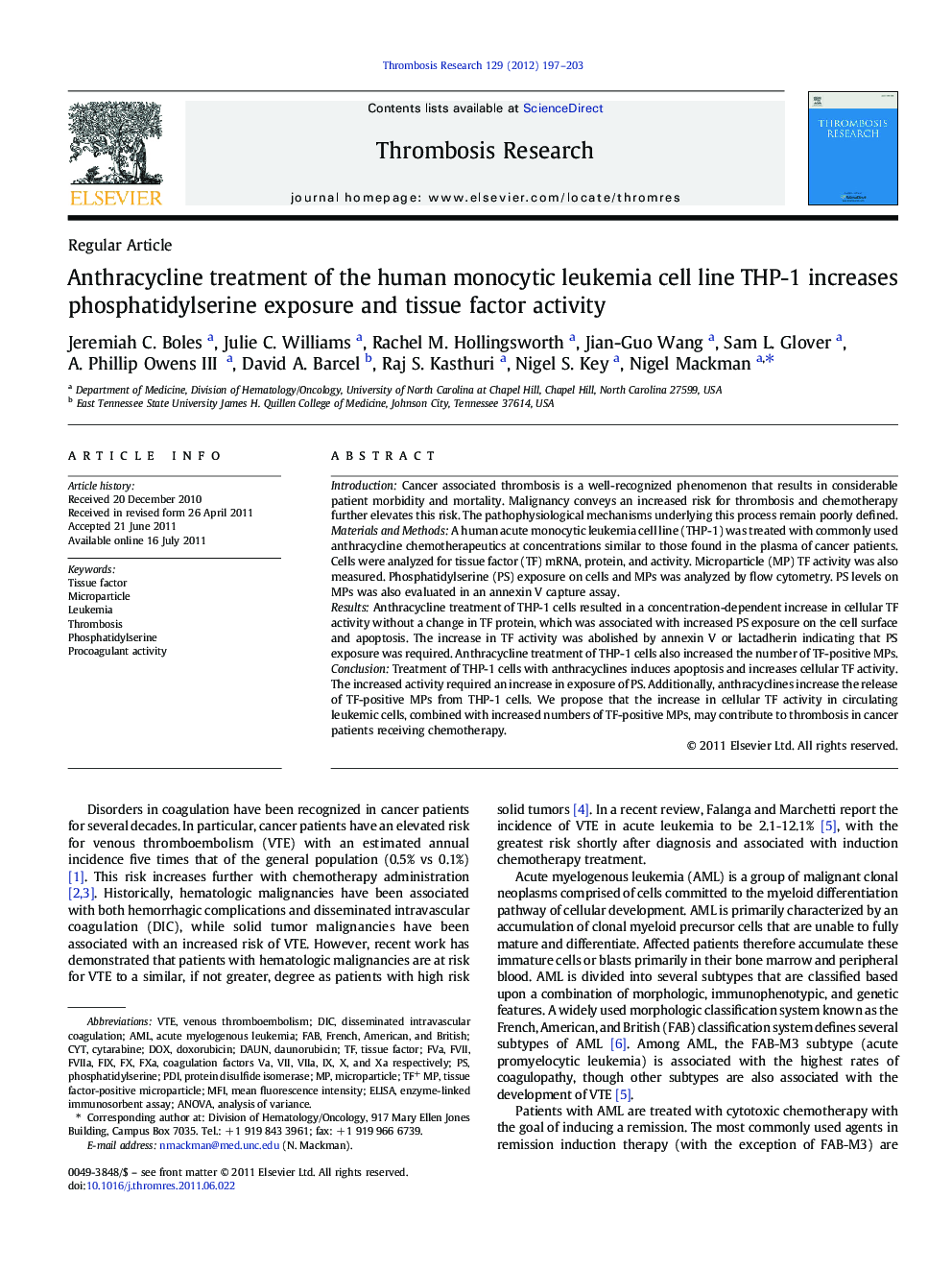| Article ID | Journal | Published Year | Pages | File Type |
|---|---|---|---|---|
| 3027472 | Thrombosis Research | 2012 | 7 Pages |
IntroductionCancer associated thrombosis is a well-recognized phenomenon that results in considerable patient morbidity and mortality. Malignancy conveys an increased risk for thrombosis and chemotherapy further elevates this risk. The pathophysiological mechanisms underlying this process remain poorly defined.Materials and MethodsA human acute monocytic leukemia cell line (THP-1) was treated with commonly used anthracycline chemotherapeutics at concentrations similar to those found in the plasma of cancer patients. Cells were analyzed for tissue factor (TF) mRNA, protein, and activity. Microparticle (MP) TF activity was also measured. Phosphatidylserine (PS) exposure on cells and MPs was analyzed by flow cytometry. PS levels on MPs was also evaluated in an annexin V capture assay.ResultsAnthracycline treatment of THP-1 cells resulted in a concentration-dependent increase in cellular TF activity without a change in TF protein, which was associated with increased PS exposure on the cell surface and apoptosis. The increase in TF activity was abolished by annexin V or lactadherin indicating that PS exposure was required. Anthracycline treatment of THP-1 cells also increased the number of TF-positive MPs.ConclusionTreatment of THP-1 cells with anthracyclines induces apoptosis and increases cellular TF activity. The increased activity required an increase in exposure of PS. Additionally, anthracyclines increase the release of TF-positive MPs from THP-1 cells. We propose that the increase in cellular TF activity in circulating leukemic cells, combined with increased numbers of TF-positive MPs, may contribute to thrombosis in cancer patients receiving chemotherapy.
